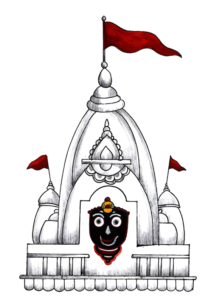
The Enigmatic Brahma Temple of Khajuraho
Brahma Mandir
A Historical and Architectural Exploration
Abstract :
The Brahma Temple of Khajuraho, nestled on the serene banks of Khajuraho Sagar Lake, stands as an architectural marvel with a history as fascinating as its intricate design. This research article delves into the rich background, architectural elements, and historical significance of this temple. Despite its misnomer, the Brahma Temple is not dedicated to Lord Brahma but instead enshrines a Shiva Lingam. We will explore the intricate architecture of this temple and its place within the Khajuraho Group of Monuments, a UNESCO World Heritage Site.
Introduction :
The Brahma Temple is situated in the heart of Khajuraho, a town in Madhya Pradesh, India, celebrated worldwide for its group of remarkable temples. Built during the Chandela dynasty’s rule, this temple complex is known for its exquisite art and architecture, attracting both pilgrims and tourists alike. The Brahma Temple, despite its name, pays homage to Lord Shiva, housing a sacred four-faced lingam in its garbhagriha.
Historical Background :
Dating back to the 9th or early 10th century, the Brahma Temple is an architectural relic that stands as a testament to the rich history of the region. Local lore suggests that the temple’s title, “Brahma Temple,” is the result of a misconception. Devotees mistakenly identified the four-faced lingam in the sanctum as a representation of Lord Brahma. The temple lies alongside Khajuraho Sagar Lake, enhancing its tranquil ambiance.
Architectural Marvel :
- Materials and Construction:
In contrast to many neighboring temples that were crafted from sandstone, the Brahma Temple is uniquely constructed from granite. This choice of material represents a transition period when builders were moving from granite to sandstone in temple construction.
- Architectural Plan:
The architectural plan of the Brahma Temple is akin to the Lalguan Mahadeva temple, showcasing the evolution of temple design during this period. The simplicity of its design, in comparison to other Khajuraho temples, provides insights into the transition between architectural styles.
- Shikhara:
The shikhara, the towering element over the sanctum housing the deity, is crafted from sandstone. This juxtaposition of granite and sandstone is an intriguing aspect of the temple’s architecture.
- Garbhagriha:
The temple originally comprised a porch and a garbhagriha, but only the latter remains intact today. Externally, it is cruciform in shape with protrusions on each side. Internally, it is a square chamber supported by twelve granite pilasters. A prominent main doorway is located in the eastern projection, while a smaller doorway is situated in the western projection. Latticed windows grace the remaining two lateral projections.
- Ornamental Elements:
The main doorway, though largely unadorned, features a sculpture of the trimurti on the lintel, with representations of the holy rivers Ganga and Yamuna at its base. These motifs provide a glimpse into the artistic detailing of the temple.
Conclusion :
The Brahma Temple of Khajuraho is a treasure trove of historical and architectural significance. This granite structure, although often misunderstood for its dedication to Lord Brahma, reveres Lord Shiva. Its distinctive construction materials, architectural style, and the presence of both granite and sandstone elements make it a unique specimen within the Khajuraho Group of Monuments. As a part of the UNESCO World Heritage Site, this temple continues to intrigue scholars, pilgrims, and travelers from around the world, offering a glimpse into the rich heritage of ancient India.
Editor – Kaalchakra Team
[ Note – Before Concluding anything as a Finale, Please Go through Original Scriptures of Vaidik Literature Written in Sanskrit and Also with Meaning of That time of Language. Because English is a Limited language to Explaining the Deeper Knowledge of Vaidik Kaal. ]
